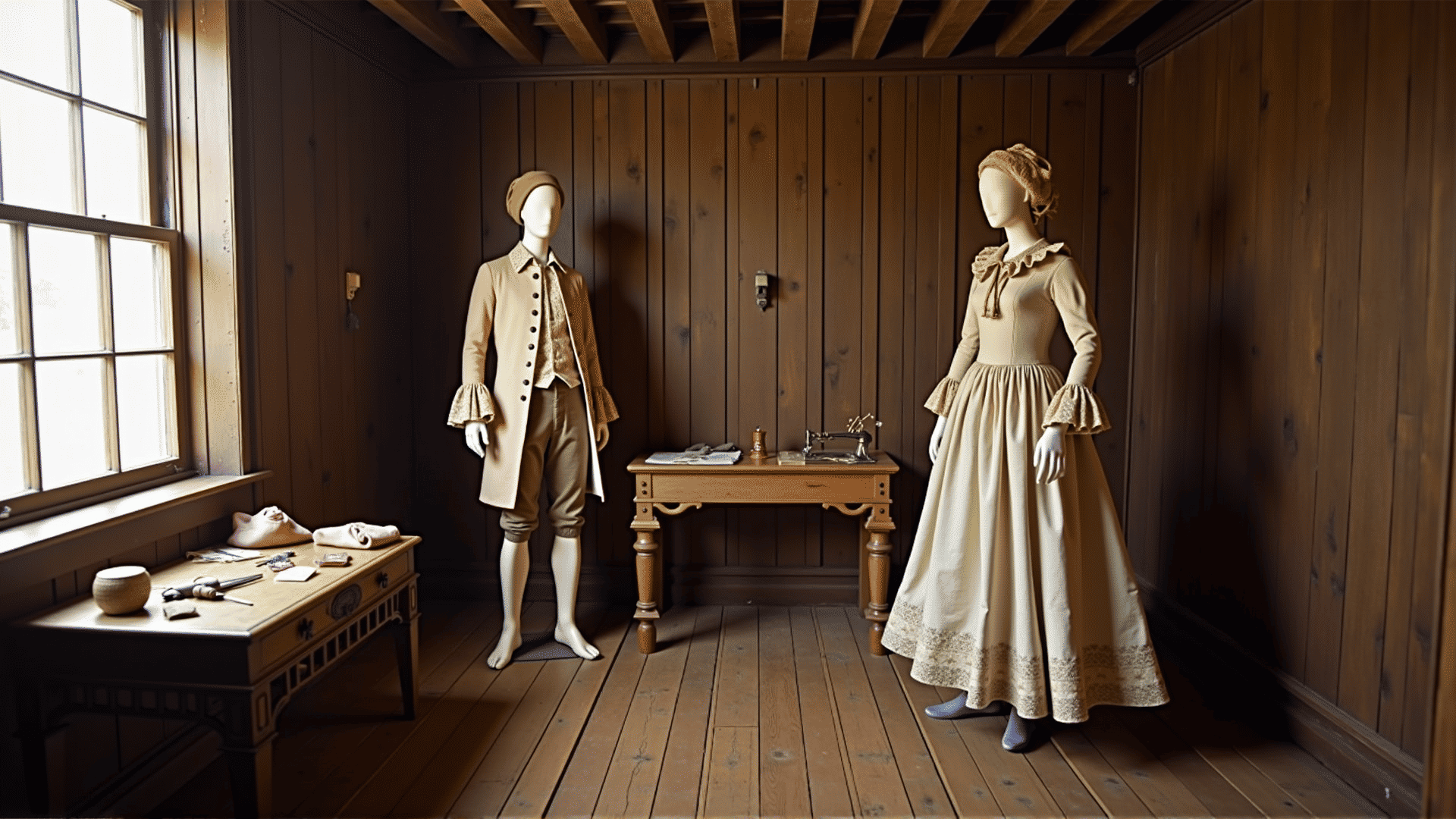The attire from the Colonial era offers a fascinating glimpse into the daily life, societal norms, and individual identities of early America. Reflecting the social distinctions of the time, these garments provide valuable insights into the cultural and economic fabric of the past.
Fabrics and Materials
During the Colonial period, wool and linen were the most frequently used fabrics. Wool was commonly used for outer garments because of its warmth and durability. Linen, derived from flax plants, was favored for its breathability and was often used in undergarments. Cotton, although not as prevalent due to its cost, began to appear more frequently in the late Colonial period. Silk was a luxury fabric reserved for the wealthy and used for special occasions or high-status individuals.
Sewing Techniques
Sewing in the Colonial era was predominantly done by hand, as sewing machines were not available until the mid-19th century. Detailed hand stitching was a hallmark of this era's craftsmanship. Seamstresses and tailors employed various stitches, including backstitch, running stitch, and whipstitch, ensuring sturdy and long-lasting garments. The art of making clothes was time-consuming, often involving intricate techniques such as pleating and shirring to add structure and style.
Men’s Attire
Men of the Colonial era typically wore waistcoats, long coats, and breeches. The waistcoat, often richly adorned with embroidery, was an essential part of a gentleman’s outfit, layered over a shirt, which was typically made of linen. Breeches, which reached the knees and were fastened with buttons or ties, were paired with stockings. The long coat, or frock, completed the ensemble and was worn to protect against the elements and for formal occasions.
Women’s Garments
Women's attire in the Colonial period comprised multiple layers. A fundamental part of a woman's wardrobe was the shift or chemise, a basic undergarment made of linen. Over the shift, women wore stays, a form of corset that provided the desired shape. Gowns, which could range from simple to ornate, were typically made of silk, wool, or cotton, depending on one's social standing. Petticoats added volume to the skirt, and aprons were worn to protect the gown during daily chores.
Children's Clothing
Children's clothing in the Colonial era was initially similar to adult clothing, with young children often dressed in smaller versions of the standard adult garments. Boys wore frocks until they were approximately six or seven, at which point they transitioned to breeches like their fathers. Girls wore stays and gowns, evolving into the more structured dresses as they grew.
Social Implications
The type of garment worn during the Colonial era often indicated social status and affluence. For example, intricate embroidery and the use of silk denoted higher social standing. Clothing also played a crucial role in signifying one's occupation or trade, with specific attire associated with different professions.
In essence, examining Colonial era garments reveals much about the lives of those who wore them. From the careful selection of fabric to the labor-intensive construction methods, each garment tells a story of an individual's social position, lifestyle, and the era's technological advancements. These garments not only served a functional purpose but also provided an identity marker in the early American society.
